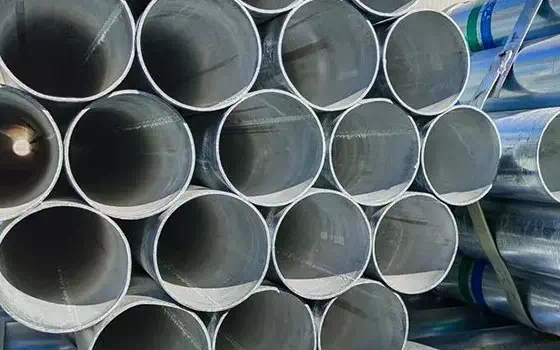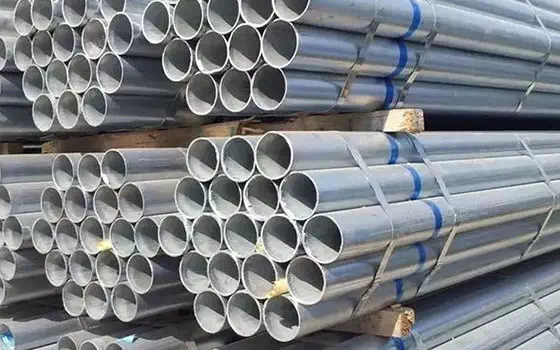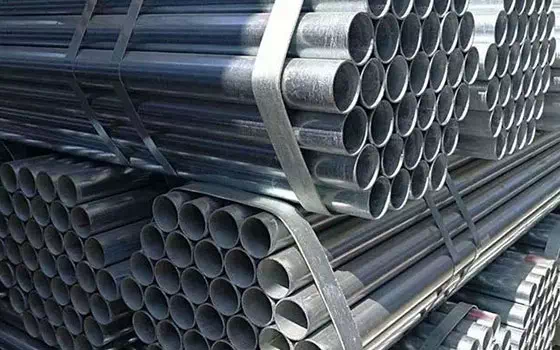Sales hotline
Sales hotline
Galvanized pipe is a metal material widely used in various industries, and its core feature is that the surface is specially treated and covered with a layer of zinc, which provides excellent corrosion protection and durability for the pipe. In the construction industry, municipal engineering and industrial fields, the application of galvanized pipes is extremely common. In order to have a deeper understanding of galvanized pipe, this paper will elaborate on its manufacturing process, types, application fields and advantages and disadvantages.

First. Manufacturing process of galvanized pipe
The production process of galvanized pipes is a complex engineering technology that involves multiple steps, each of which is critical:
1. Steel cutting: First, the steel is cut to the right length according to the demand, which is the starting point of the manufacturing process.
2. Steel pipe rust removal: Next, the rust and oxide on the surface of the steel pipe are removed by sandblasting or other methods to ensure the adhesion of the galvanized layer.
3. Galvanized treatment: After the steel pipe is cleaned, it is put into a galvanized tank containing zinc, and a uniform and dense zinc layer is formed on the surface of the steel pipe by electrolytic deposition.
4. Inspection warehousing: Finally, the completed galvanized steel pipe will undergo strict quality inspection, and only qualified products can be stored or entered the market.
Two, the type of galvanized pipe
Galvanized pipe according to the different production process, can be divided into the following types:
1. Hot-dip galvanized pipe: This pipe immerses the steel pipe into the molten zinc liquid at high temperature, thus forming a thicker zinc layer, which makes it have excellent anti-corrosion ability and long-term durability.
2. Electrogalvanized pipe: In the process of electrogalvanizing, the steel pipe as the cathode of the electrolytic cell, the zinc layer is deposited on the surface of the steel pipe through electrolysis, forming a thin and uniform zinc layer, this method not only has a good anti-corrosion effect, but also has a good decorative effect.
3. Zincizing pipe: As an emerging anticorrosive material, the zincizing pipe penetrates zinc atoms into the surface of the steel pipe through a special process to form a tight zinc layer, which also has high anticorrosive properties and durability.

Third, the application field of galvanized pipe
Galvanized pipe has been widely used in the following fields because of its excellent performance:
1. Construction field: In construction engineering, galvanized pipe is often used in water supply, drainage, heating and other pipeline systems, and its anti-corrosion characteristics ensure the long-term stable operation of the pipeline system inside the building.
2. Municipal field: In municipal engineering, galvanized pipes are widely used in sewage treatment, rainwater discharge, tap water supply and other pipeline systems to ensure the normal operation of the city and the living needs of residents.
3. Industrial field: In industrial manufacturing, galvanized pipe is used in petroleum, chemical, electric power and other industries, as an important pipeline for fluid transmission, its pressure and corrosion resistance characteristics are particularly important in these industries.

Four, the advantages and disadvantages of galvanized pipe
1. Advantages: Galvanized pipe is known for its excellent corrosion resistance and durability, which can significantly extend the service life of the pipe. Its surface is smooth, not easy to accumulate dirt, easy to clean and maintain. At the same time, it also has good compressive strength and tensile strength, and can adapt to the use of various pressure and temperature conditions.
2. Disadvantages: Although galvanized pipe has many advantages, its cost is relatively high, and the production of galvanized pipe needs to consume a lot of energy and resources. During transportation and installation, galvanized pipes are prone to scratches or deformation, so appropriate protective measures need to be taken. In addition, under extreme environmental conditions, such as high temperature or high humidity, the anti-corrosion effect of galvanized pipes may be affected.
In summary, galvanized pipe, as a high-quality metal pipe material, has broad application prospects in the future. In the actual selection and use of galvanized pipe, the appropriate type and specification should be selected according to the specific application environment and requirements, and installation and maintenance should be carried out in strict accordance with the relevant standards and specifications to ensure the safe, stable and efficient operation of the pipeline system.
Sales hotline:

 Scan and consult wechat customer service
Scan and consult wechat customer service